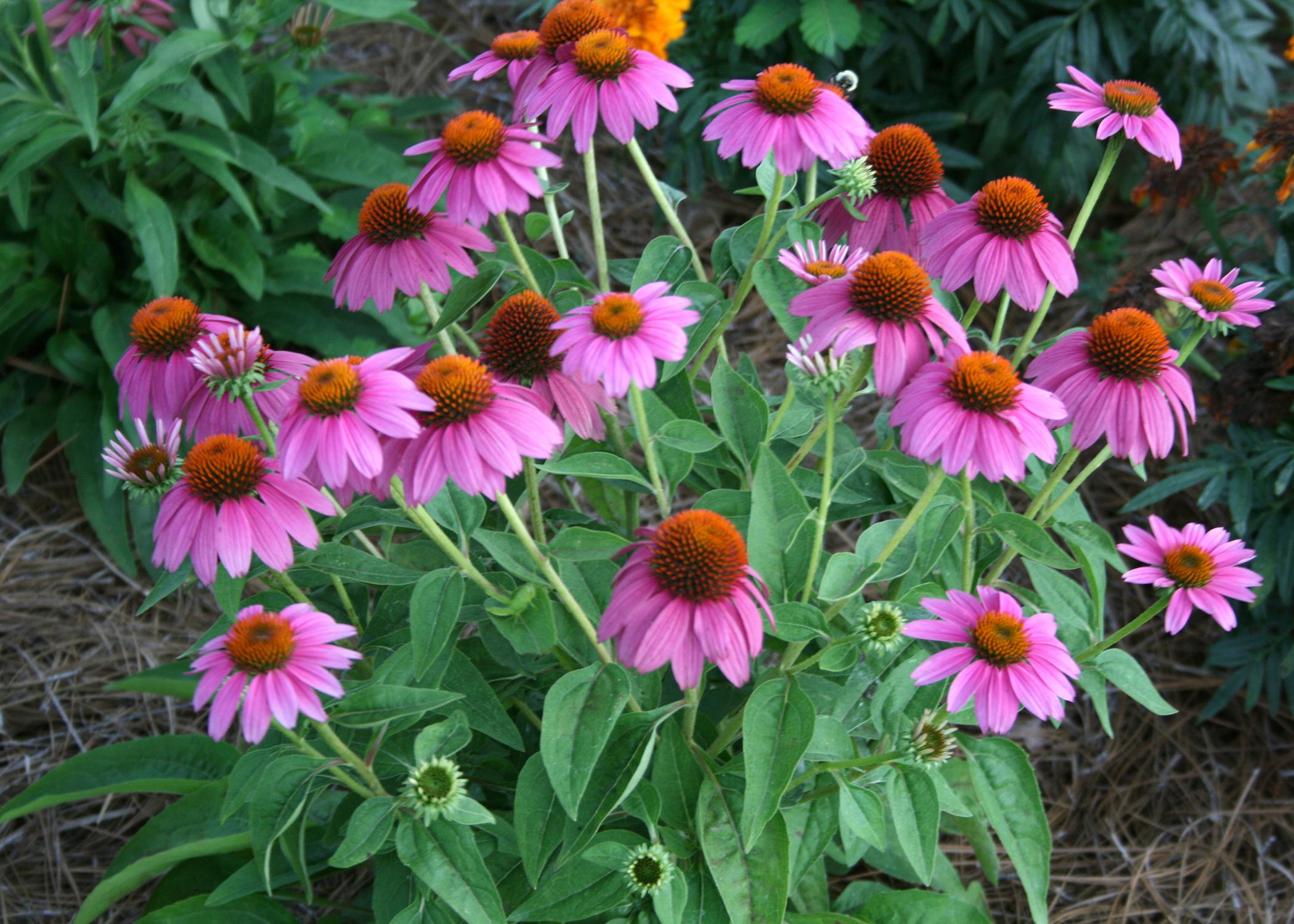Information Possibly Outdated
The information presented on this page was originally released on March 2, 2015. It may not be outdated, but please search our site for more current information. If you plan to quote or reference this information in a publication, please check with the Extension specialist or author before proceeding.
Plan to include purple coneflowers in gardens
Through the column and television show “Southern Gardening,” I have the chance to share some of my favorite landscape plants with home gardeners all across Mississippi. And believe me, I have a lot of favorite plants depending on the season, flower color and more.
This week as I’m getting ready for summer, I’m thinking hard about purple coneflower, known botanically as Echinacea.
There are nine species of purple coneflower, all native to North America. The main species found in the trade is the Eastern purple coneflower. It grows up to 3 feet tall and wide, producing bright-purple flowers with dark centers.
Who can resist plants that have 2- to 4-inch flowers with bright-purple petals and dark center cones? Apparently nobody can, which makes this plant a summer favorite. Typically, coneflowers are large, back-row plants used in perennial beds or borders, but plant breeders are developing smaller plants worthy of the front row.
Pow Wow Wild Berry coneflower is a 2014 Mississippi Medallion winner that grows only to about 20 inches tall. The foliage and stems have stiff, hairy surfaces that might remind you of medium-grit sandpaper. Pow Wow Wild Berry has superior branching that results in more flowers, which bloom continuously. It also has a reduced need for deadheading.
I always recommend deadheading anyway, as this helps encourage repeat blooming through the summer and prevents reseeding. Once established, these plants are some of our hardiest, able to withstand Mississippi’s hot and dry summers. Feed sparingly in the spring with a balanced, slow-release fertilizer. Use about two tablespoons of commercial fertilizer per plant, or if you prefer, use high-quality compost or other organic fertilizer instead.
Pow Wow Wild Berry was also chosen an All-America Selections in 2010.
Though this plant was named for the color purple, breeders are selecting coneflower varieties in white, orange, yellow, red and almost every color in between.
In 2013, All-America Selections recognized an outstanding Echinacea called Cheyenne Spirit. This is a seeded selection that features first-year flowering. It produces a delightful mix of flower colors from rich purple, pink, red and orange tones to lighter yellows, creams and white.
This wide range of flower colors comes on well-branched, durable plants, making them sure to please the color preferences of any gardener. Cheyenne Spirit does not require a lot of water and can be used in the perennial border, in a mass landscape planting, in a butterfly garden or as a cut flower.
Coneflowers may be the ideal plant for busy gardeners because they thrive on neglect. They tolerate a wide variety of soil types, from tight clay to sandy. Irrigation is needed only when the plants are newly set out. Once established, normal rainfall is sufficient except during extreme droughts.
The crown of the plant is susceptible to rot conditions. This is not a problem in the summer but can become one during cool, moist winter months. Mississippi gardeners can address this problem by planting coneflowers in raised beds, which helps keep the plant crown drier.
On the coast, the coneflower is a tender perennial because of the cool, moist winters, so use it there as an annual. Divide coneflowers every three to four years, but be patient waiting for regrowth. Several varieties can be grown from seed, and the plants will reseed themselves, becoming a weedy problem some seasons. Deadhead the flowers if this becomes an issue.
For additional information on Echinacea, see the Mississippi State University Extension Service publication P2690 Purple Coneflowers for the Mississippi Gardener.









